Unable to answer all orientation questions (ie A&O x 12) DifficultyLevels of Consciousness Assessment for Nurses (LOC) Levels of Consciousness Assessment for Nurses (LOC) Watch later Share Copy link Info Shopping Tap to unmute If playback doesn't¾Review Neurological Assessment ¾Discuss the basic neuroanatomy and physiology ¾Describe the pathophysiology, management and nursing interventions of ¾Hydrocephalus ¾Cerebrovasculardisease ¾Meningitis ¾Seizures/status epilepticus ¾Head/Spinal Cord Injury ¾Neuromuscular Disorders Basic Neurologic Exam •Level of consciousness
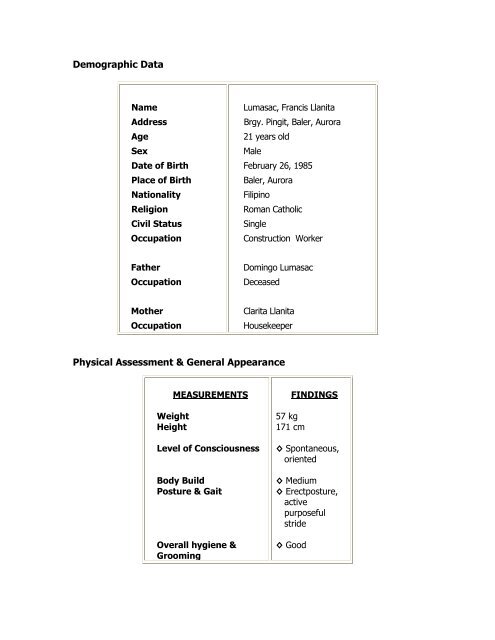
Demographic Data Physical Assessment General Nursing Crib
Nursing assessment of altered level of consciousness
Nursing assessment of altered level of consciousness-Level of consciousness should also be assessed upon initial contact with your patient and continuously monitored for changes throughout your contact with the patient a AVPU The AVPU scale is a rapid method of assessing LOC The patient's LOC1121 · 2 Assess Their Level of Alertness When you chat with them, their level of alertness and level of consciousness are both very important When neuro changes occur, they first appear in levels of consciousness It is very subtle and they happen over a longer period of time It's not like vital sign changes that can flip on a dime




Management Of Clients With Altered Level Of Consciousness
· For example, the level of alertness is described by terms such as clouding of consciousness, drowsiness, obtundation, stupor, or coma, and is assessed by evaluating the content of consciousness, especially as represented by the quality of the patient's perception of self and the environmentLevel of consciousness refers to a patient's level of arousal and alertness 3 Assessing a patient's orientation to time, place, and person is a quick indicator of cognitive functioning Level of consciousness is typically evaluated on admission to a facility to establish a patient's baseline status and then frequently monitored every shift for changes in condition 4To assess a patients neurological status requires the nurse to understand all elements of levels of consciousness It is very important to understand in nursing a change in level of consciousness can be seeminly minimal such as noting a new onset of behaviors that were previously not exhibited before, like restlessness, anxiety, and confusion
Neurological Altered Level of Consciousness (LOC) Level of responsiveness and consciousness is the most important indicator of the patient's condition LOC is a continuum from normal alertness and full cognition (consciousness) to coma Altered LOC is not the disorder but the result of a pathology Coma Unconsciousness, unarousable unresponsiveness(p =004)Conclusion It appeared that many of the pain assessment scale items held potential for inclusion in a new, more comprehensively developed and validated scale for the assessment of pain in patients with disorders of consciousness Keywords acquired brain injury, disorders of consciousness, nociception, pain, pain assessment I · Assess Level of Consciousness An individual's level of consciousness can deteriorate due to many different reasons, such as head injuries, increased intracranial pressure, haemorrhage, or lesions and tumours Determining the level of consciousness depends on the individual you are assessing and can be easy or difficult
· FPnotebookcom is a rapid access, pointofcare medical reference for primary care and emergency clinicians Started in 1995, this collection now contains 6936 interlinked topic pages divided into a tree of 31 specialty books and 736 chaptersNeurotrauma Nursing Neurological Assessment Gina Greco, RN Nursing Education Keck Medical Center USC NeuroTrauma LA 13 OUTCOME OPTIMIZATION LACUSC • List five components that make up the neuro exam of theStart studying Assess Level of Consciousness (LOC) Learn vocabulary, terms, and more with flashcards, games, and other study tools




Comprehensive Overview Of Nursing And Interdisciplinary Care Of The Acute Ischemic Stroke Patient Stroke




Avramov S Scale To Assess The Level Of Consciousness 16 Download Table
2915 · Level of Consciousness Assessment "AVPU" The AVPU scale is a system where you can measure and record a patient's responsiveness to indicate their level of consciousness It is a simplification of the Glasgow Coma Scale, which assesses a patient response in three measures eyes, voice, and motor skills2315 · Nursing priorities in assessment of level of consciousness focus on (1) evaluating arousal or alertness and (2) appraising consciousness or awareness 1 Although universally accepted definitions for various levels of consciousness do not exist, the categories outlined in Box 171 are often used to describe the patient's level of consciousness 1–4Neurological assessment, describes assessment of level of consciousness ONSCIOUSNESS Consciousness is defined as the state of being aware of physical events or mental concepts Conscious patients are awake and responsive to their surroundings (Marcovitch, 05) The level of consciousness has been described as the degree of arousal and awareness
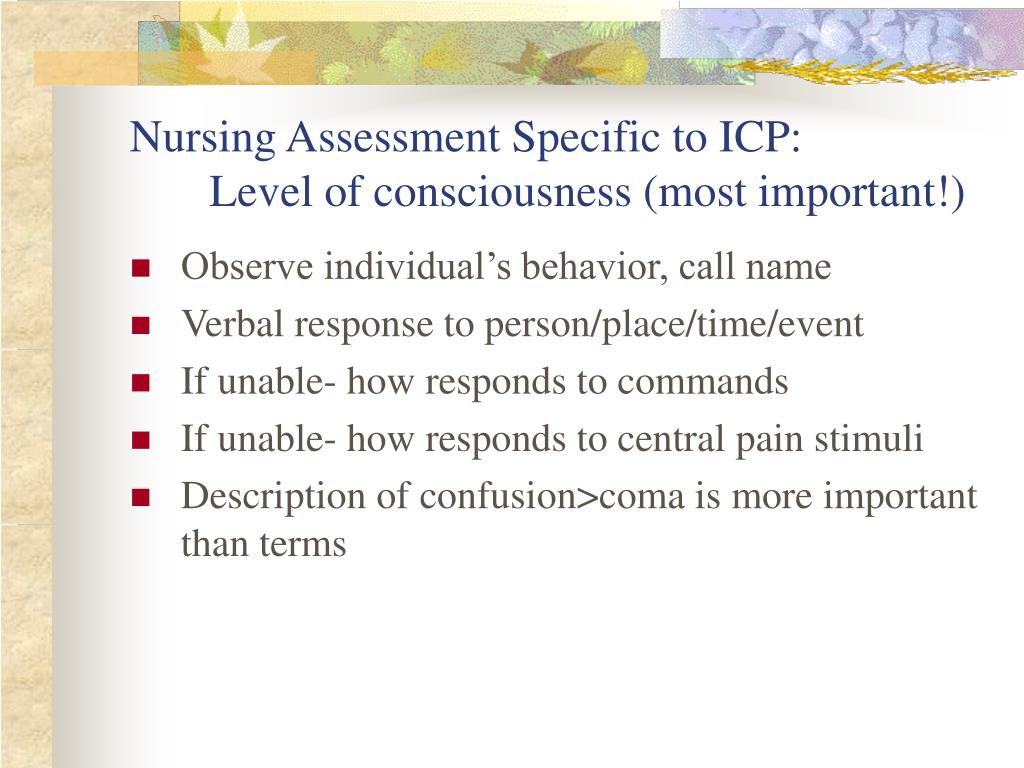



Ppt Neurosensory Altered Cerebral Function And Increased Intracranial Pressure Iicp Powerpoint Presentation Id




Neurological Observations Nursing Times
And AVPU Alert, responds to Voice, responds to Pain, Unresponsive) compared to each other and also to the more complicated Glasgow Coma Scale (GCS) Neurosurgical nurses recorded patients' conscious level with each of the three scalesNursing assessment is the gathering of information about a patient's physiological, psychological, sociological, and spiritual status by a licensed Registered NurseNursing assessment is the first step in the nursing processA section of the nursing assessment may be delegated to certified nurses aides Vitals and EKG's may be delegated to certified nurses aides or nursing techs · The single most important assessment Evaluation of level of consciousness (LOC) and mentation are the most important parts of the neuro exam A change in either is usually the first clue to a deteriorating condition The following terms are commonly used to describe a decreased LOC, so it helps to be familiar with them Full
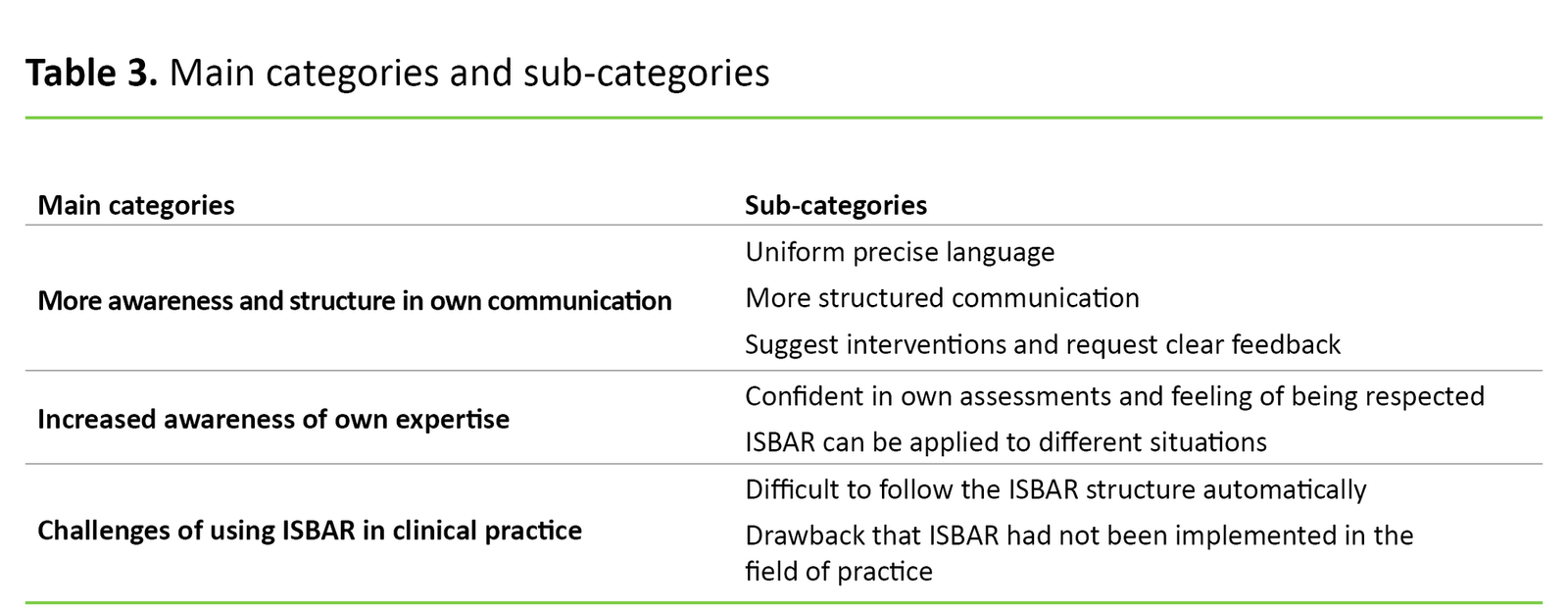



The Isbar Tool Leads To Conscious Structured Communication By Healthcare Personnel




Interventions For Preoperative Clients Francisco Felix Perioperative Nursing
Skilled nursing assessment of altered level of consciousness leads to early nursing and medical intervention, which, in turn, can improve patient outcomes In this paper, a critical review of the literature will focus on altered level of consciousness inLevel of consciousness (GCS · Assessment Guidelines Delirium 1 Assess for fluctuating levels of consciousness, which is key in delirium 2 Interview family or other caregivers 3 Assess for past confusional states (eg, prior dementia diagnosis) 4 Identify other disturbances in medical status (eg, dyspnea, edema, presence of jaundice) 5




Guide Rapid Assessment Studocu




Understanding The Glasgow Coma Score Nurse Org
An altered level of consciousness is any measure of arousal other than normal Level of consciousness (LOC) is a measurement of a person's arousability and responsiveness to stimuli from the environment A mildly depressed level of consciousness or alertness may be classed as lethargy;This video "Level of Consciousness (LOC) Terminology " is part of the Lecturio course "MedSurg Nursing Neurological Assessment" WATCH the complete courseNursing Neuro Assessment The initial assessment should be a comprehensive exam covering several critical areas • Level of consciousness and mentation • Movement • Sensation • Cerebellar function • Reflexes • Cranial nerves This initial exam will establish baseline data with which to compare subsequent assessment findings




Ingenius Level Of Consciousness Assessment Avpu The Facebook




The Isbar Tool Leads To Conscious Structured Communication By Healthcare Personnel
Documenting level of consciousness Huntley, Ann RN, APRN, BC, CCRN, MSN Author InformationThe level of consciousness determines to a certain extent the level of functional disturbance within the neuraxis A patient who qualifies as a grade I or II has cortical or diencephalic dysfunction The grade III patient has physiologic dysfunction above the midbrainThe following topics are part of the routine daily assessment of most patients As you read and review each system, be aware of the possible abnormalities of the mental status examination Neurological Assessment Changes in level of consciousness;




Management Of Clients With Altered Level Of Consciousness
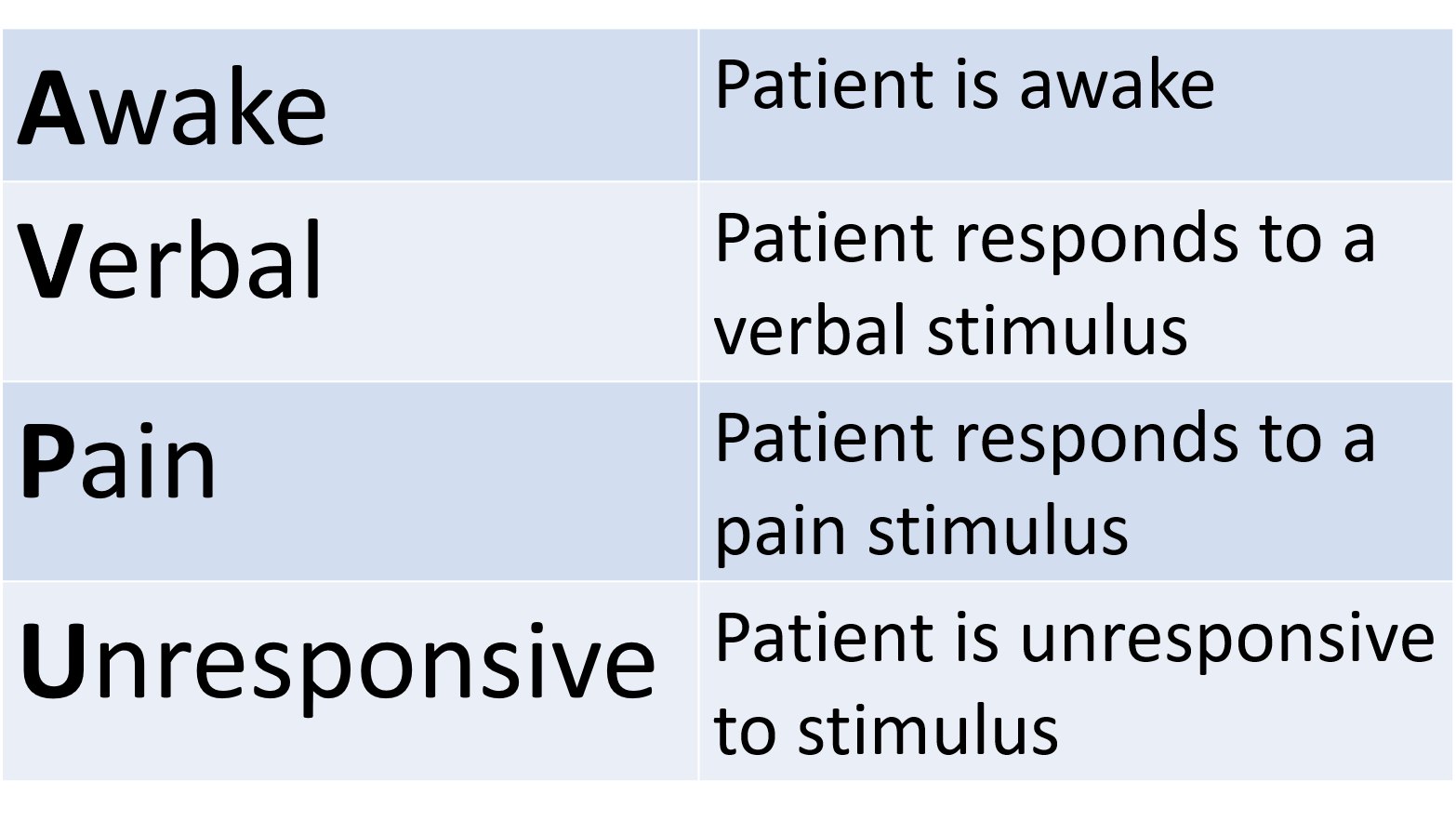



How To Use Avpu To Check Level Of Consciousness
1305 · AVPU is a straightforward scale that is useful to rapidly grade a patient's gross level of consciousness, responsiveness, or mental status It comes into play during prehospital care, emergency rooms, general hospital wards, and intensive care unit (ICU) settings1234 · An alternative method of coma assessment is presented and compared with the Glasgow Coma Scale The merits of the Comprehensive Level of Consciousness Scale as a research tool are presented An analysis of 101 consecutive consciousnessimpaired patients with their shortterm outcome is presentedWe investigated how two simple scales (ACDU Alert, Confused, Drowsy, Unresponsive;




The National Institutes Of Health Stroke Scale Nihss Grepmed




Nursing Care Of The Client Having Surgery Nurse Key
Physical Assessment Level of Consciousness Glasgow coma scale is used to assess the level of consciousness 1 Eye opening Test and Score Spontaneous – 4 To speech – 3 To pain – 2 No response – 1 2 Verbal response Test and Score Oriented – 5 Confused – 4 Inappropriate words – 3 Incomprehensible sound – 2 No response – 1 3In assessing level of consciousness and this distinguishes them from staff on a general ward assessing neurological state as part of an EWS We do not feel that this is likely to alter the conclusions substantially, as, whilst the neurosurgical nurses use the GCS routinely in their clinical practice, they would have had little exposure to AVPU or ACDU · Assessment• Level of responsiveness or consciousness• Verbal response• Patient's orientation to time, person, and place, the patient is asked to identify the day, date, or season of the year and to identify where he or she is or to identify the clinicians, family members, or visitors present• Assess alertness by the patient's
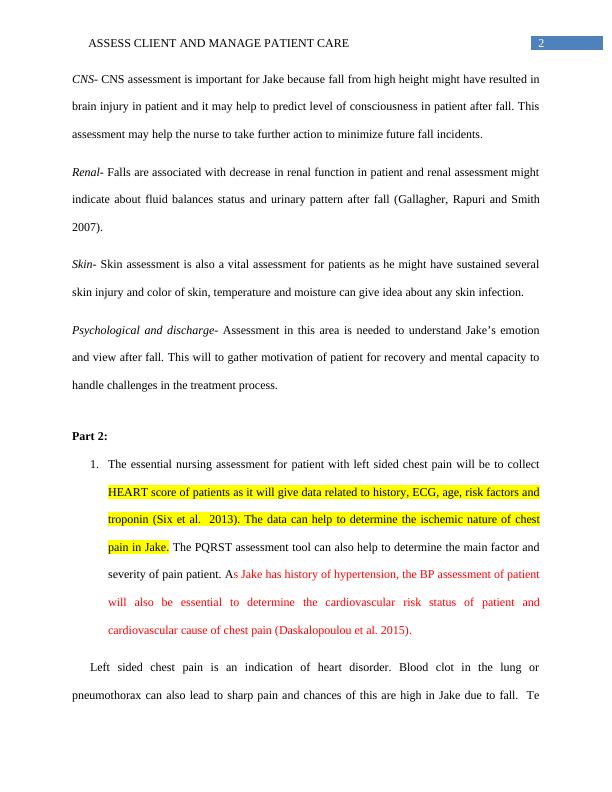



Hlten606b Assess Clients And Manage




Nursing Health Assessment Mnemonics Tips Nurseslabs
· The different levels of consciousness are Alert awake and responsive Confused note that confusion can occur anywhere along this spectrum and is not always present prior to the patient becoming somnolent, lethargic, etc It is possible to have a patient who is somnolent or even lethargic and still orientedAwakens easily from sleep;The level of consciousness can be assessed by a variety of methods Explain to the patient, whether consciously or unconsciously, with frequent observations are needed, both during the day and night It is generally believed that patients remain unaware of the voices, even if they can not act in response, and if explanations are not specified, they can become anxious and sad
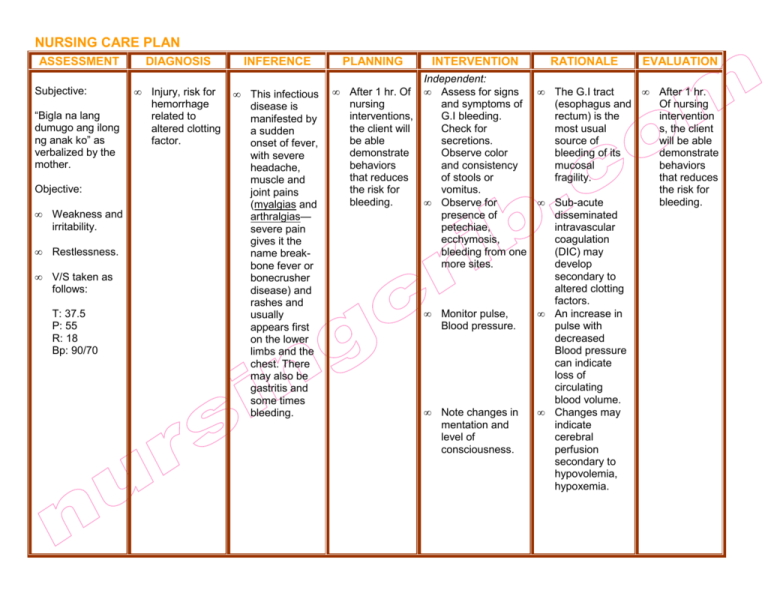



Nursing Care Plan Dengue
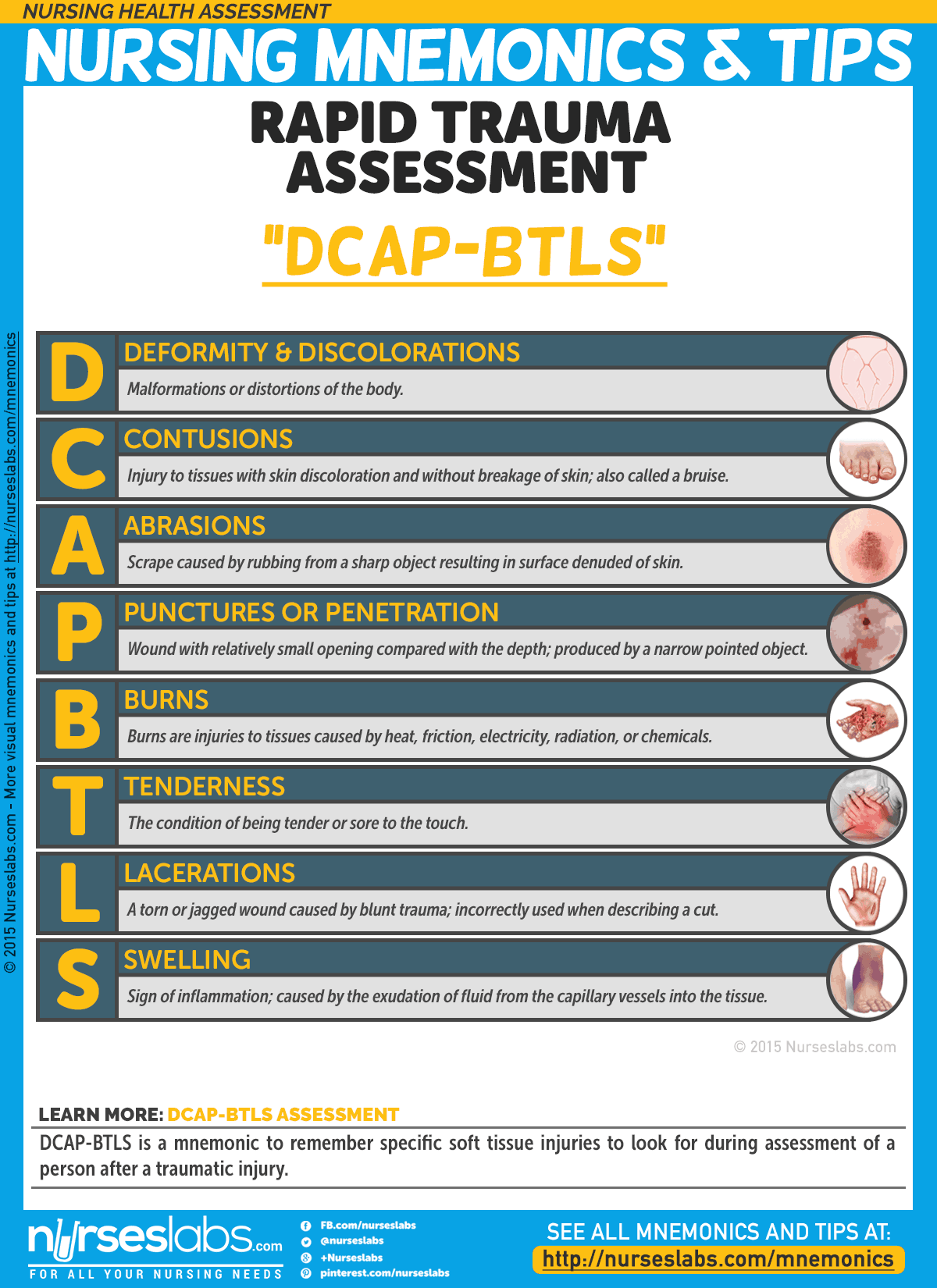



Nursing Health Assessment Mnemonics Tips Nurseslabs
NURSING HEALTH ASSESSMENT NURSING MNEMONICS TIPS LEVEL OF CONSCIOUSNESS ASSESSMENT "AVPU" ADULT BEHAVIOR Eyes open spontaneously Appears aware of and responsive to the environment Follows commands eyes tract peoples and objects Eye do not open spontaneously but open to verbal stimuli Able to respond in some meaningful way when spoken to · A neurological assessment involves thoroughly assessing a patient's level of consciousness, motor function and pupillary reaction The purpose of a neurological assessment is to detect abnormalities that may suggest brain injury, or disease The information obtained will help determine patient care needs and the necessity for medical1903 · Level of consciousness conduct a rapid assessment of the patient's level of consciousness using the AVPU system (Smith 03) Awake (A) observe if the patient can open his/her eyes, takes interest and responds normally to his/her environment This would be



Unconscious Clients Patients Assessment Nursing Diagnosis Nursing Procedure




Head To Toe Assessment Flashcards For Ati Nclex Hesi Exams Leveluprn
Tries Assessment of consciousness was part of the daily routine for a majority of bedside nurses (95%), with an estimated median frequency of six times per shift The majority uses a standardised instrument, and the Glasgow Coma Scale is the most common Most participants assess consciousness primarily for clinical decision‐making andPrecise assessment of the consciousness level by GCS or to use RASS as well as GCS and AVPU to assess agitationsedation status in poisoned patients None of these methods are indicative of prognosis in poisoned patients, but by using them more detailed evaluation of patients' consciousness can be obtained · Aim To identify factors that have an impact on nurses' performance of patients' conscious level assessment Background There is a need for nurses to accurately assess a patient's conscious level to detect neurological changes and initiate prompt action Methods Nine databases were systematically searched (1990–February 10) to review experimental, cohort,




Glasgow Coma Scale Glasgow Coma Scale Nursing School Prerequisites Nursing Assessment
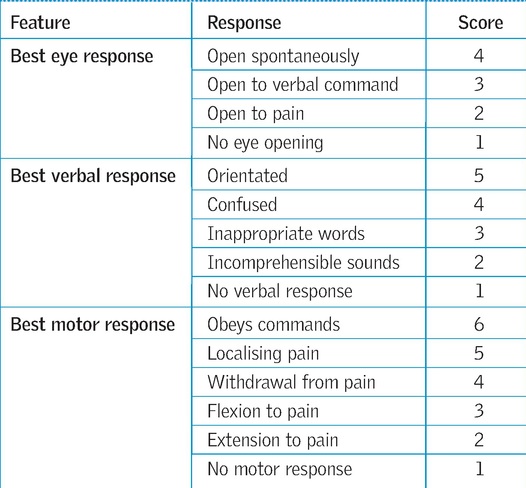



Conscious Level Chart Assessment Baran
Someone in this state can be aroused with little difficultyRestlessness, listlessness, confusion, disorientation, others · Neurosurgical nurses have experience in assessing level of consciousness and this distinguishes them from staff on a general ward assessing neurological state as part of an EWS We do not feel that this is likely to alter the conclusions substantially, as, whilst the neurosurgical nurses use the GCS routinely in their clinical practice, they would have had little exposure to




Intracranial Pressure Chapter 57 Copyright 14 By Mosby




1 Neurological Assessment At The End Of This Self Study The Participant Will 1 Describe The Neuro Nursing Assessment 2 List 5 Abnormal Findings In A Neuro Ppt Download
1401 · Nursing Points for Levels of Consciousness General Priority assessments Alertness;




Ten Point Guide To Mental State Examination Mse In Psychiatry




Sage Books Professional Skills In Nursing A Guide For The Common Foundation Programme
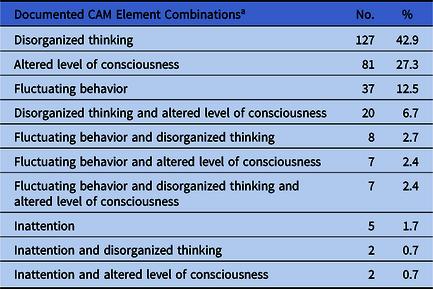



Documentation Of Acute Change In Mental Status In Nursing Homes Highlights Opportunity To Augment Infection Surveillance Criteria Infection Control Hospital Epidemiology Cambridge Core




Nursing Care Plan Of Hemophilia
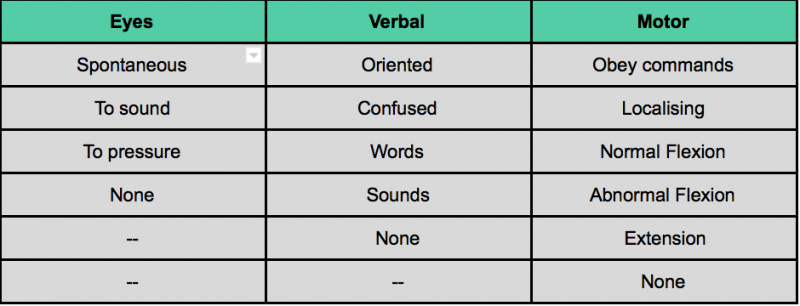



Glasgow Coma Scale Physiopedia
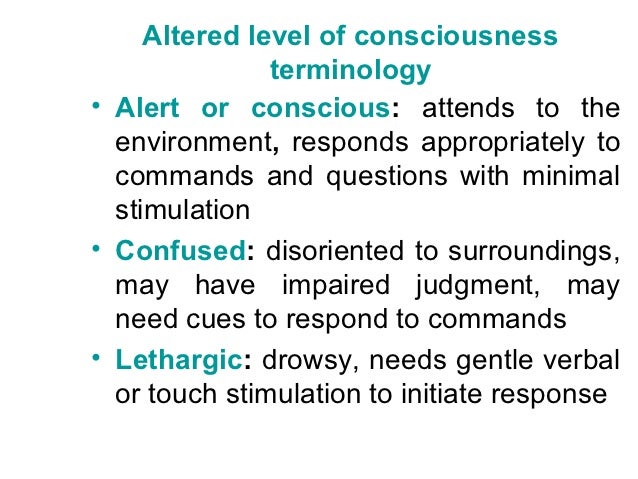



Altered Level Of Consciousness
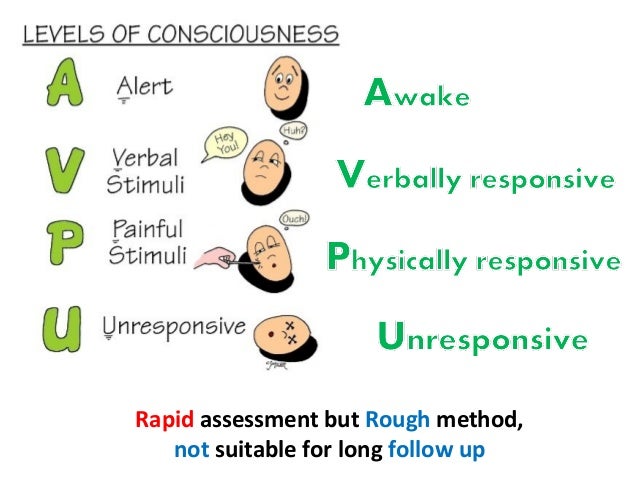



Assessment Of Consciousness




Management Of Clients With Altered Level Of Consciousness




Demographic Data Physical Assessment General Nursing Crib




Ipp Icu 003 Flip Ebook Pages 1 3 Anyflip Anyflip
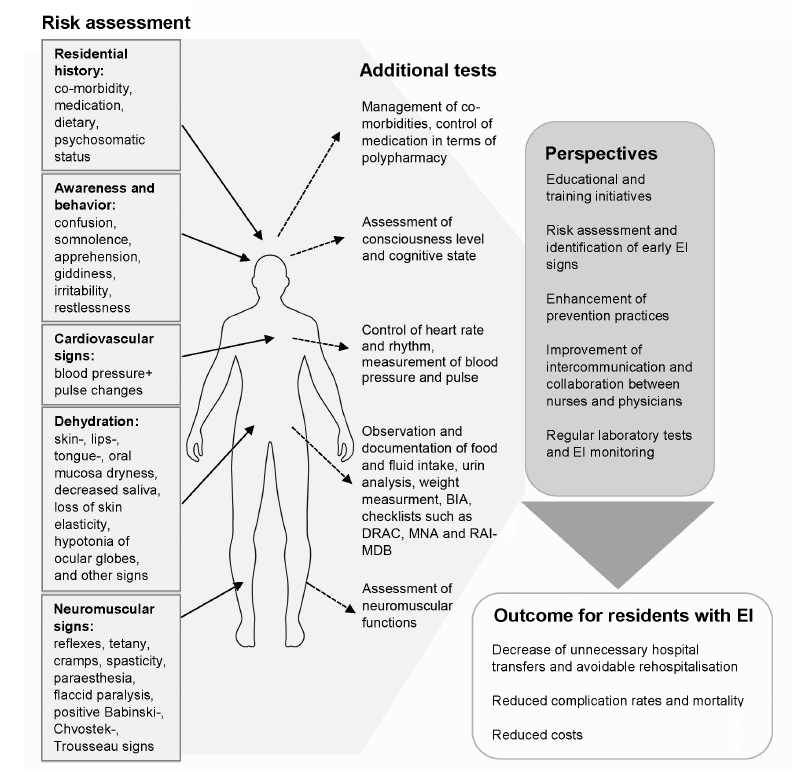



Electrolyte Imbalances In Nursing Home Residents A Review Of Prevalence Management And Considerations The Journal Of Nursing Home Research




Acute Kidney Injury Chapter 47 Copyright 14




Assessment Nurse Key




Levels Of Consciousness Nursing Information Pharmacology Nursing Levels Of Consciousness




Stroke Examination Tools Careercert




Altered Level Of Consciousness




1 Neurological Assessment At The End Of This Self Study The Participant Will 1 Describe The Neuro Nursing Assessment 2 List 5 Abnormal Findings In A Neuro Ppt Download




Investigating Factors That Have An Impact On Nurses Performance Of Patients Conscious Level Assessment A Systematic Review Semantic Scholar
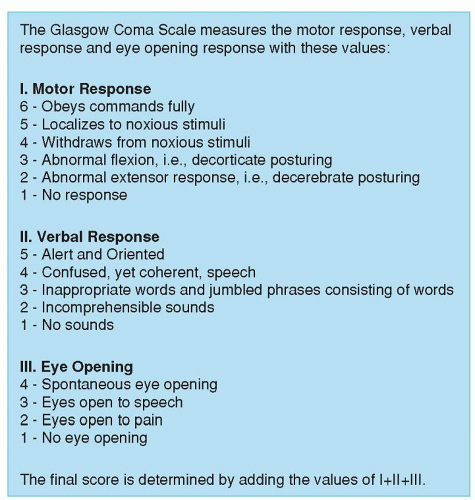



Neurological Assessment Nurse Key




Levels Of Consciousness




Ppt Assessment Of Neurologic Function Powerpoint Presentation Free Download Id




Levels Of Consciousness Neuro Assessment Youtube




Documenting Levels Of Consciousness Nursing The Normal State Of Consciousness Comprises Either The State Of Wak Emergency Nursing Nursing School Survival Nurse
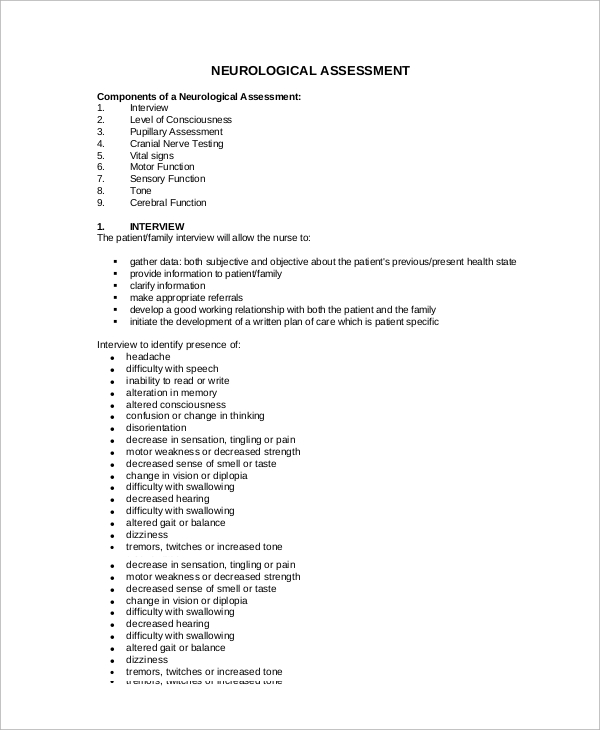



Free 7 Sample Nursing Assessment Forms In Pdf Ms Word




Investigating Factors That Have An Impact On Nurses Performance Of Patients Conscious Level Assessment A Systematic Review Semantic Scholar



Nursing Diagnosis Android Apps Appagg




Observations Nursing Problem Assessing Level Of Consciousness Medical Health Information




Words Used To Describe Level Of Consciousness Download Table




Assessment Of Older People 4 Assessing The Psychological Domain Nursing Times




Neuro Assessment Made Easy Nursing News From Rn Com
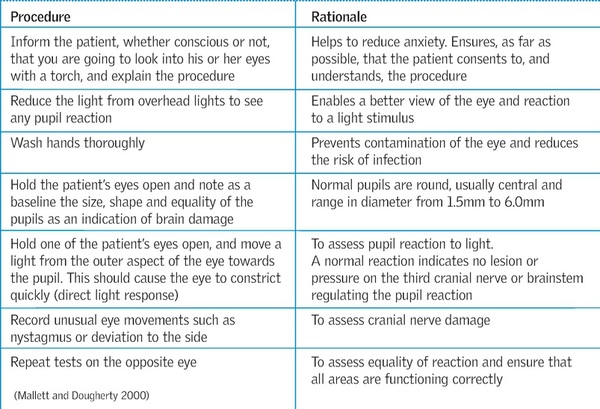



The Glasgow Coma Scale And Other Neurological Observations




Words Used To Describe Level Of Consciousness Download Table




One To One Specialling And Sitters In Acute Care Hospitals A Scoping Review Sciencedirect




Guidelines For A Brief Neurological Nursing Assessment In Acute Care A Literature Review Semantic Scholar




Nursing Assessment Wikipedia




National Institutes Of Health Stroke Scale Nihss Total Grepmed




Nur 12 O Neurological Disorders Cerebrovascular Accident Seizures




Focus On Shock Relates To Chapter 67 Nursing




Levels Of Consciousness Neuro Assessment Youtube




Neurological Assessment Ed Areyouprepared




Stroke Nursing Management Zoya Minasyan Rn Msnedu Structures




Chapter Health History And Physical Assessment Flashcards Quizlet




Levels Of Consciousness Assessment For Nurses Loc Youtube



Clinical Guidelines Nursing Observation And Continuous Monitoring




Pdf Identification And Evaluation Of Observational Measures For The Assessment And Or Monitoring Of Level Of Consciousness In Adult Palliative Care Patients A Systematic Review For I Can Care
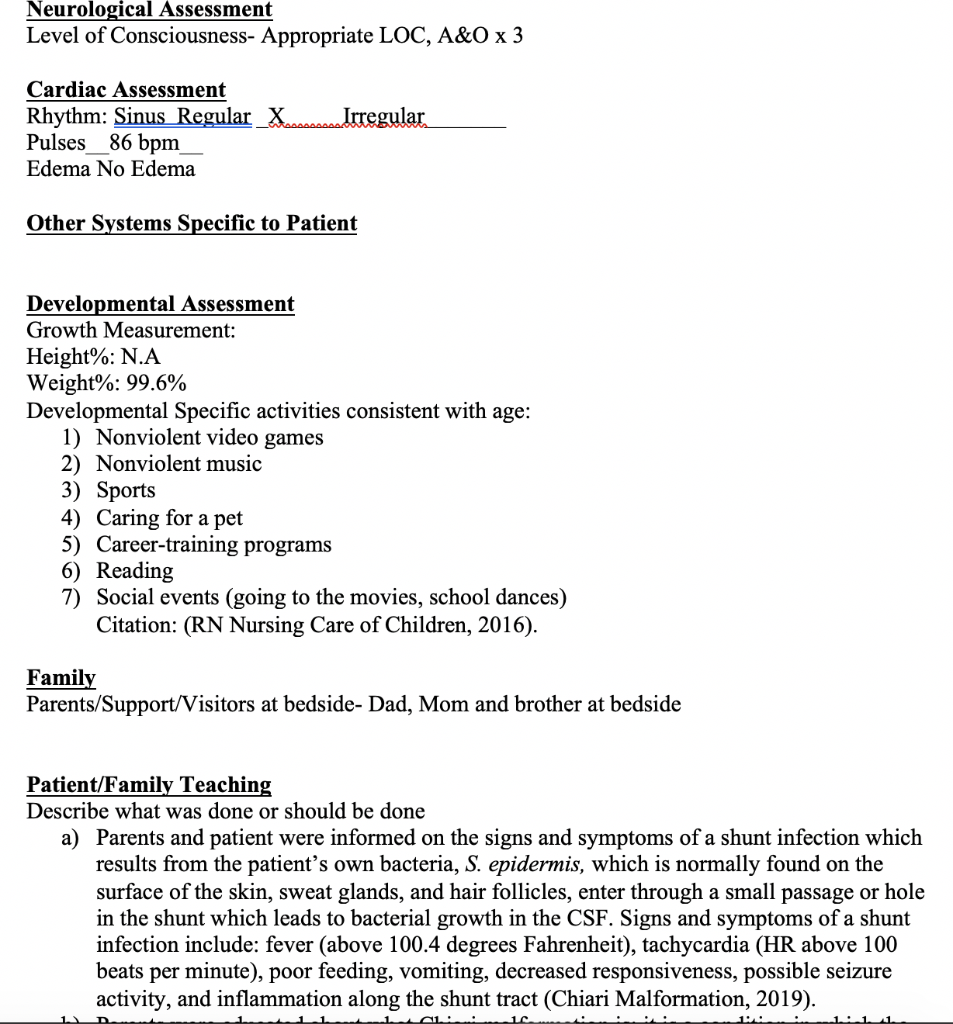



Please Give A Nurses Note In A Paragraph And Give Chegg Com




Ncp For Altered Conciousness Coma Liver
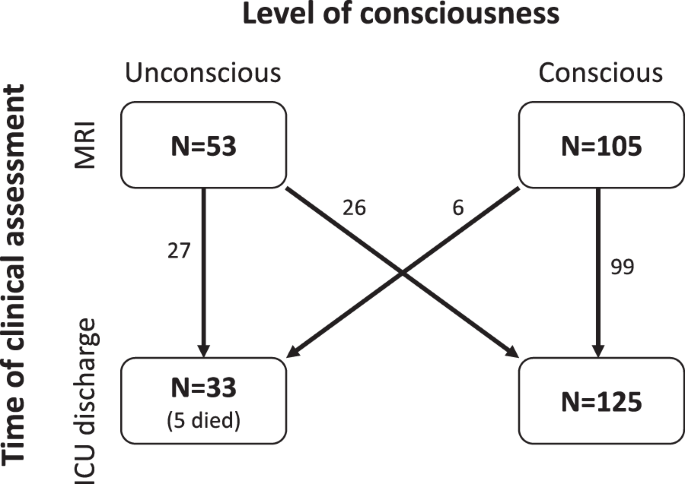



Deep Structural Brain Lesions Associated With Consciousness Impairment Early After Hemorrhagic Stroke Scientific Reports




Solved Which Nursing Assessment Finding Alerts The Nurse Chegg Com




Neuro Nurse Assessment Conscious Head To Toe Freshrn




1 Neurological Assessment At The End Of This Self Study The Participant Will 1 Describe The Neuro Nursing Assessment 2 List 5 Abnormal Findings In A Neuro Ppt Download




Words Used To Describe Level Of Consciousness Download Table
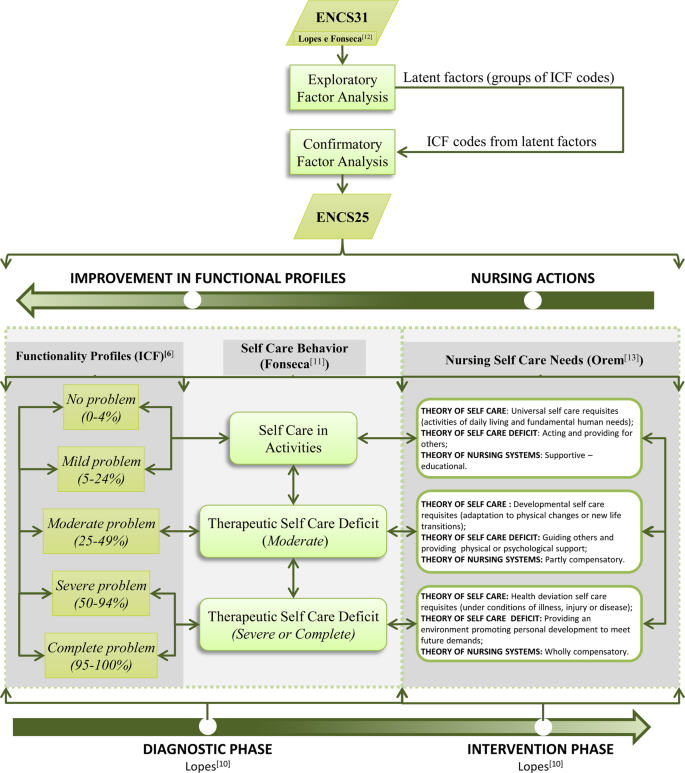



A Nursing Care Intervention Model For Elderly People To Ascertain General Profiles Of Functionality And Self Care Needs Scientific Reports




Free 32 Nursing Assessment Examples In Pdf Doc Examples
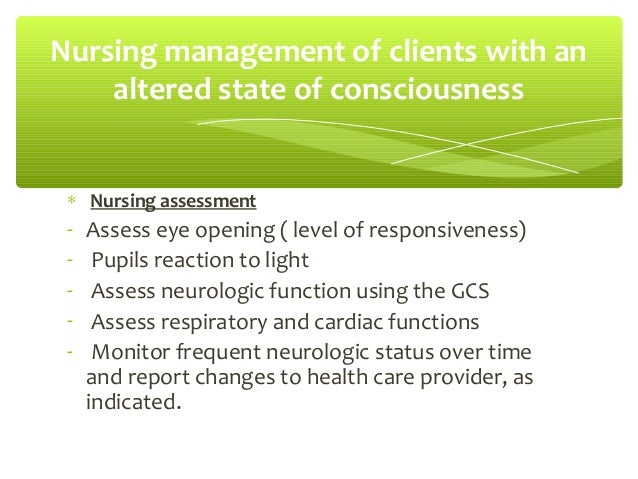



Management Of Clients With Altered Level Of Consciousness




Nursing Assessment Documentation Template Example Within Hudsonradc
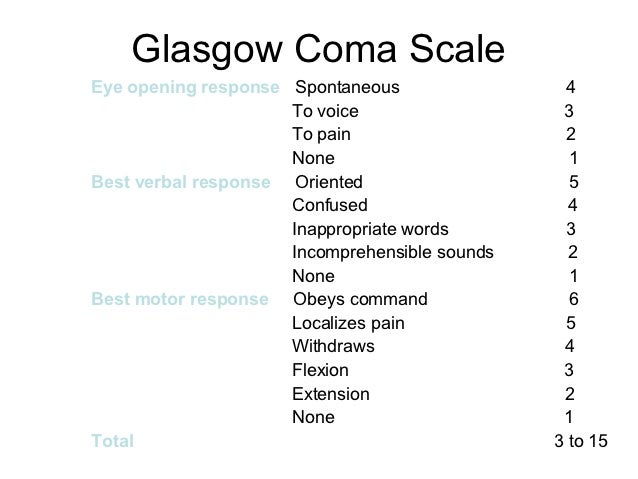



Altered Level Of Consciousness
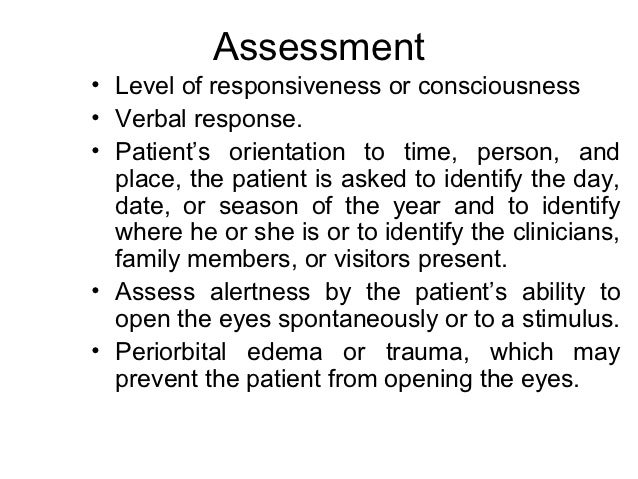



Altered Level Of Consciousness




Critical Care Nurses Decision Making Sedation Assessment And Management In Intensive Care Semantic Scholar
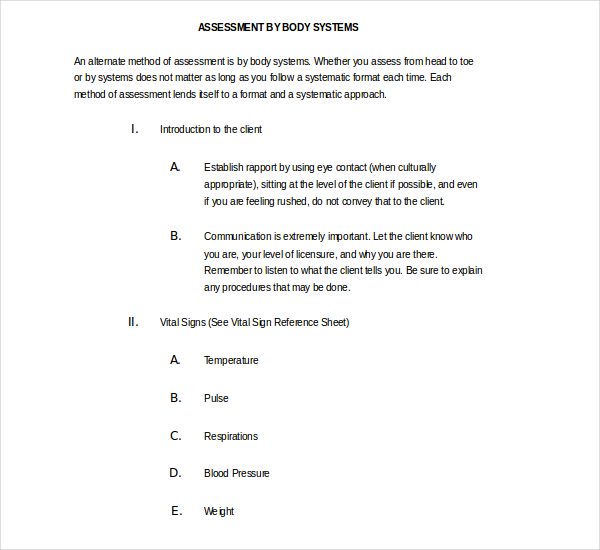



Free 7 Sample Nursing Assessment Forms In Pdf Ms Word




Nursing Care Of The Surgical Patient Straight A Nursing




Life After Nclex Rn Nursing Mnemonics Emt Study Nurse
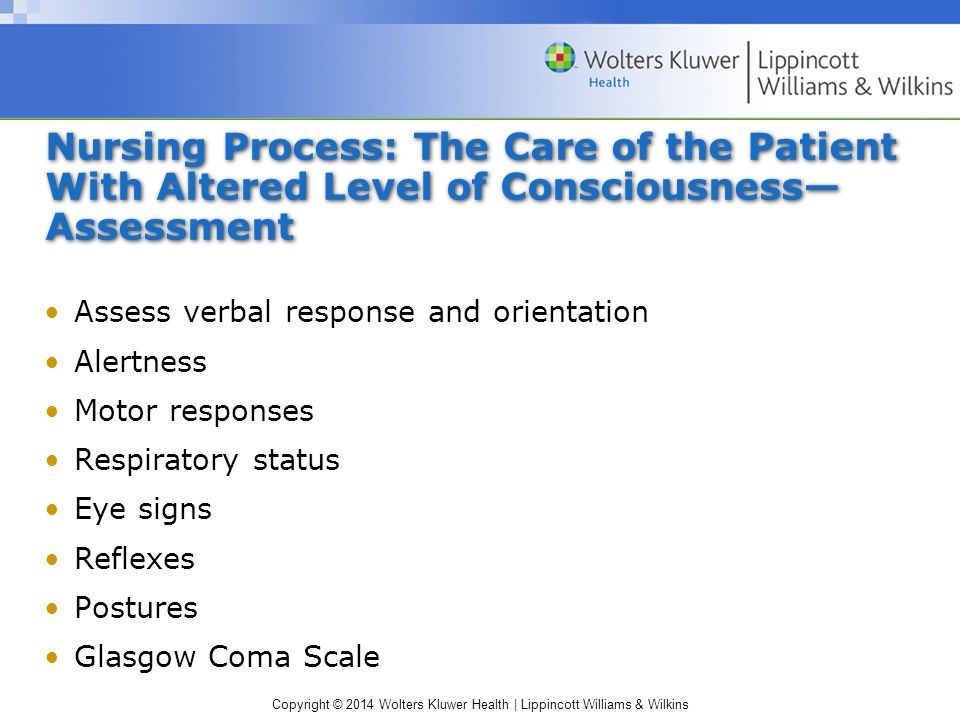



Management Of Patients With Neurologic Dysfunction Ppt Video Online Download




Solved The Nurse Is Assessing The Level Of Consciousness Chegg Com




Acute Confusion Nursing Diagnosis Care Plan Nurseslabs




Gcs 40 Glasgow Coma Scale Updates Standardize Stimulation Response



Nursing Process The Patient With An Altered Level Of Consciousness




1 Neurological Assessment At The End Of This Self Study The Participant Will 1 Describe The Neuro Nursing Assessment 2 List 5 Abnormal Findings In A Neuro Ppt Download




Acute Confusion Nursing Brain
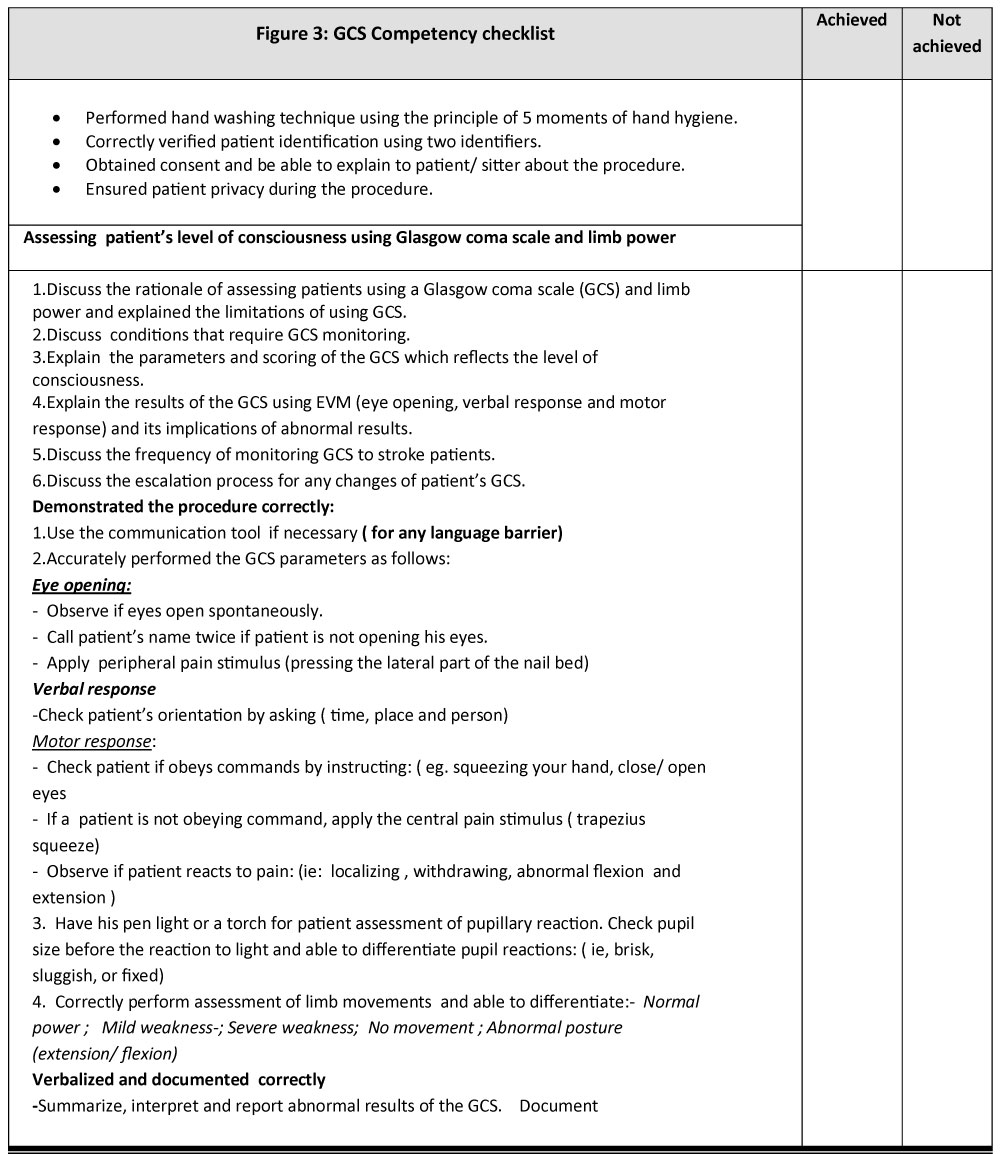



Www Ncbi



0 件のコメント:
コメントを投稿